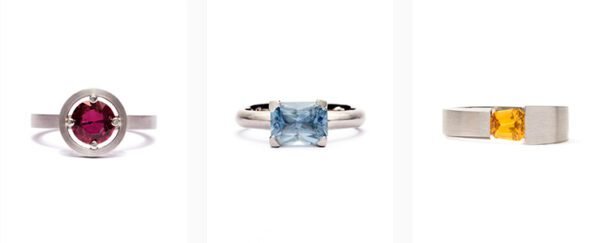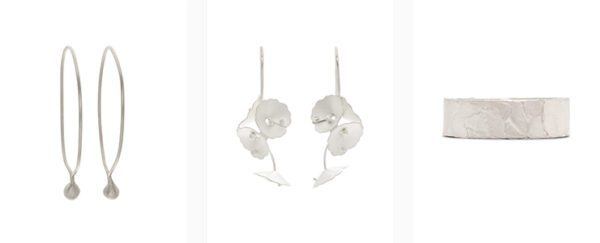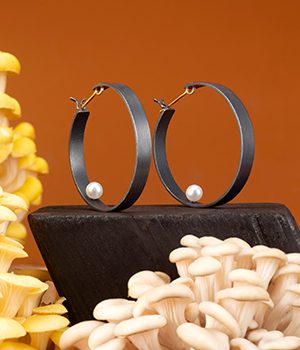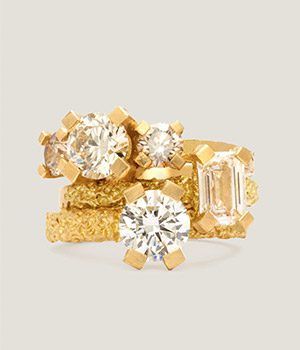Platinum, Palladium, White Gold or Sterling Silver?
When buying a ring, there’s a lot to think about-size, stone, finish, and colour. But one of the most important choices is the metal, as it affects both the look and durability of your ring over time.
If you’re looking for a white-coloured metal, the most common options are platinum, palladium, white gold, and sterling silver. Each has unique qualities, including strength, appearance, and cost. Here’s a breakdown to help you decide which is best for you.
Platinum
Platinum is a rare, strong, and naturally bright metal. It was widely used in jewellery until World War I and II, when it was reserved for military purposes like engine and rifle parts. As a result, jewellers turned to 18ct white gold as an alternative. However, in recent decades, platinum has regained popularity, especially for wedding and engagement rings.
-
Rarity & value: Platinum is around 30 times rarer than gold, which historically made it more expensive. However, with rising gold prices, platinum is now similar in price to 18ct white gold
-
Appearance: Platinum has a cool grey tone, somewhat similar to silver but more refined
-
Strength & durability: Unlike some metals, platinum does not tarnish or oxidise, so its colour won’t change over time
-
Scratches & maintenance: While platinum can develop small scratches with use, these can be easily polished out by a jeweller
-
Workmanship: Due to its hardness, not all jewellers can work with platinum. It requires specialised tools and expertise, so it’s best to check if the artist you like works with this metal
If you’re looking for a ring that’s elegant, durable, and long-lasting, platinum is an excellent choice.
Pictured: Halo Ring in Platinum and Ruby by Rhys Turner; Poet’s Ring in Platinum and Sapphire by Emma Goodsir; Tension Set Ring in Platinum and Sapphire by Rhys Turner
Palladium
Palladium is a naturally white metal that is closely related to platinum in colour and durability. In fact, palladium is often used to “bleach” yellow gold to create white gold.
-
Appearance: It looks almost identical to platinum but is about half the weight.
-
Strength & durability: Palladium is even harder than platinum, making it more resistant to scratches.
-
Workmanship: Like platinum, palladium requires specialised skills to work with, and only some jewellers offer it.
Palladium is an excellent alternative to platinum, especially if you prefer a lighter ring with similar durability and colour.
White gold
Gold has long been a favourite for wedding and engagement rings because of its strength, rarity, and lasting value. White gold is created by mixing yellow gold with silver, zinc, and palladium to give it a whiter appearance.
-
9ct white gold contains more alloy metals, making it whiter but also harder and more brittle.
-
18ct white gold has a deeper natural grey tone and is often plated with rhodium to make it appear brighter. Over time, this plating wears off and needs reapplying. At e.g.etal, we prefer to highlight the natural beauty of white gold, so our 18ct white gold pieces are unplated
When describing the differences between the two, the easiest way to understand them is that 9ct white gold is like glass: it’s strong, however it is more brittle. 18ct white gold is like plexiglass, more agile and able to withstand knocks and bumps.
If you want classic gold-based jewellery but prefer a white tone, white gold is a great option.
Black Diamond Sixteen Ring in white gold by Cass Partington; Tannin Necklace in white gold and sapphire by Alicia Hannah Naomi; Quilted Keeper Ring in white gold by Susan Ewington
Sterling Silver
Silver is a bright and affordable metal that works well in many jewellery styles. It’s a popular choice due to its versatility and lower price.
-
Strength & durability: Silver is strong but can become brittle over time, making it less ideal for everyday wear
-
Wear & tear: Sterling silver can wear down or break under stress, so it’s not recommended for a lifetime ring like a wedding or engagement ring. Silver also naturally oxidises when exposed to air and humidity, leading to a dark patina. However, this can be easily removed with a polishing cloth
If you love the look of silver and don’t mind occasional maintenance, it’s a great choice. But for a ring meant to last a lifetime, platinum, palladium, or white gold are better options.
Large Round Pleurs Hoop Earrings in silver by Nicky Hepburn; Forget-Me-Not Earrings in silver by Yuko Fujita; 6mm Melted Ring in silver by Welfe Bowyer
Alternative white metals: titanium & stainless steel
If you’re open to alternative metals, titanium and stainless steel may be worth considering.
-
Strength & durability: Both metals are incredibly strong and resistant to damage; while also being lighter than traditional precious metals
-
Hypoallergenic: Perfect for people with metal allergies
-
Appearance: Their colour is slightly darker than 18ct white gold
Something to keep in mind is that not not all jewellers work with titanium or stainless steel. Plus these metals cannot be resized, so be sure of your ring size before ordering.
Each of these metals has unique qualities, so it’s important to consider your lifestyle, budget, and personal style when selecting a ring. If you have a design in mind or want expert advice, feel free to contact us!





